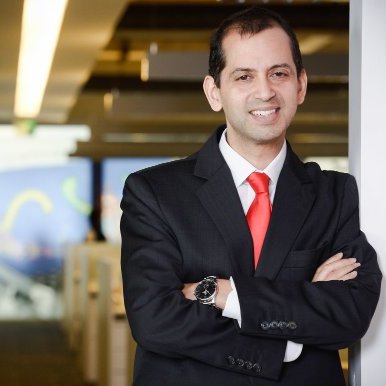One of the biggest myths to be perpetrated within the PR profession relates to its ultimate demise; the emergence of digital, automation and big data will render the idea of earned engagement obsolete. I’ve always been a strong advocate of professional evolution; the key is to agree what part of the profession needs evolving.
My belief is that in a world of digital and social the principle of ‘earned’ engagement – connecting with a brand’s audience without a supporting incentive or exchange – has become more important rather than less. And that PR professionals are uniquely placed to make such connections.
Let me explain around three points:
Firstly, the algorithm works both ways; the ease with which brands can target potential clients is precisely equal and opposite to the ease with which the same potential clients can block them. Apparently, Facebook uses 98 data points to fine tune (unsolicited) advertising; but this selection is from a total of potential 29,000 insights the platform has on its users. Everything from wedding anniversaries and employment history, to shopping habits and relationships . . . All designed to make user experience (and the barrage of unsolicited advertisements) more meaningful and relevant; of course!
The unappetising reality is that it’s never been easier for (non-technical) user to simply render all this technology moot; 61% of smartphones in India come equipped with adblockers as standard and 122 browsers include ad blocking software.
Secondly, the nature of digital and social increasingly resembles the ‘wild west’; it is real-time, irreverent, offers little control and even less recourse in the event of misinformation or a crisis. A brand’s ability to ‘control’ its message on social is – in reality – virtually zero. Sound familiar? It certainly does to anyone who’s tried to convince the editor of a national newspaper to cover their client’s product launch, or to correct a factual inaccuracy. PR practitioners have made a profession of trying to equate other people’s agendas to those of their clients, of persuading, of convincing, of cajoling . . . unsupported by any financial incentive or exchange. Perfect (and unique) training for the reality of today’s social media and not the type of skills or mindset you are likely to find within any other marcoms discipline.
The final reality of social media is that – beyond ‘pay-for-play’ (prizes, discounts, rewards) – there are only three reasons that people engage with unsolicited content:
- Pure entertainment; to be amused, gratified, ideally surprised and satisfied. Content could range from sport to soap opera, from documentaries to newspaper articles . . . but the consumer’s primary motivation is amusement; to be stimulated and enjoy the experience.
- Relevant/contextual information; whether the content be educational or practical (traffic or weather reports), the basic motivation is driven by necessity.
- Prestige; with the advent of social media (particularly mobile) content has become a form of social prestige, and sharing the same a means to derive prestige. There is considerable research on the subject; suffice it to confirm that the act of sharing is not simply altruistic, it generates benefits (social and other) to the emitter. The combination of content which is both (perceived to be) prestigious and shareable starts to become extremely compelling . . . but – when it comes to virality – there are still no guarantees.
The great unwritten law of social virality is the idea of gratification – and I don’t mean the brand’s. I mean the audience’s . . . Why should they share your content? What is their incentive to participate in your campaign? Motivations can range from prestige (especially with content that is somehow ‘exclusive’ or ‘private’) to monetary (offering discounts to people who participate in your campaign), but the key is to provide some form of acknowledgement to your audience; it is they, who are going to propagate your message after all.
Personalisation has become another ‘social currency’ of the digital age. People – particularly younger audiences – are systematically more likely to share content that they can make their own, to which they can add their spin, their identity and raise their own prestige.
My ‘earned/editorial’ instincts tend to favour the ‘prestige’ approach to gratification; if you can create genuine value for your audience (premier access to a product or service), exclusive interaction with a celebrity, or some form of public recognition (the ‘super fan’ logic), there is an opportunity to develop valuable relationships that last.
And the brand in all of this . . .? The paradox is that virality is rarely dependent on the brand, it is actually all about the audience, and the ability to connect with the same. And this is where the convincing, cajoling, persuading becomes so vital – the PR art of ‘joining the dots’ has never been more relevant.



Leave a comment